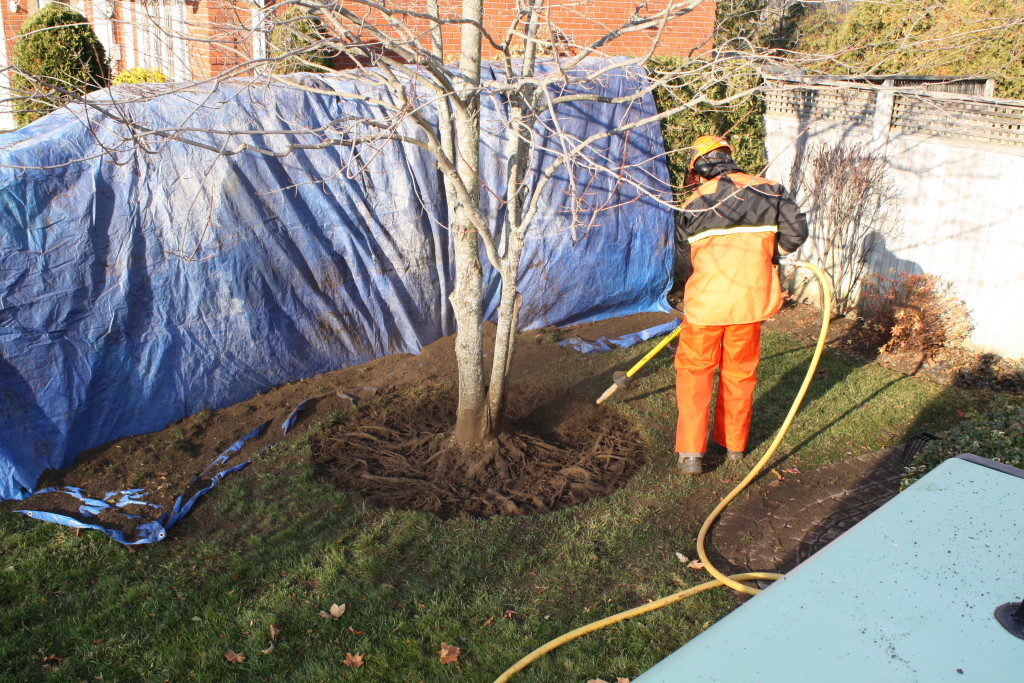Enhancing Tree Health Through Soil

Soil Remediation
Soil remediation is the technique of enhancing soil quality and creating an environment conducive to root development and overall tree health. Central to this process is the incorporation of good topsoil, mulch, and pore space, which play pivotal roles in supporting tree health.
Good Topsoil
Good topsoil is the foundation for healthy soil ecosystems, providing essential nutrients and organic matter necessary for plant growth. By incorporating nutrient-rich topsoil into tree planting sites or replenishing depleted soils, our arborists ensure that trees have access to the resources they need to thrive.
The Power of Mulch
Mulch serves as a protective barrier, insulating the soil and regulating temperature and moisture levels. Organic mulches break down over time, enhancing the soil with nutrients and fostering beneficial microbial activity—an essential component of soil health.
Creating Pore Space
Optimal soil structure is characterized by the presence of pore space—small air pockets that allow for the exchange of gases and the retention of water. Amendments like compost or aerating compacted soils can help create pore space. This promotes oxygenation and enhancing water infiltration, critical for healthy root development.
Mycorrhizal Communities
Mycorrhizal fungi form symbiotic relationships with tree roots, facilitating nutrient uptake and enhancing resilience to environmental stressors. By improving soil health and promoting the development of mycorrhizal communities, tree health can be maximized.
The Benefits of Air Spade in Tree Care
An air spade is a pneumatic tool that utilizes compressed air to excavate soil around trees and their root systems. Unlike traditional digging methods, which can be invasive and damaging to delicate roots, the air spade gently dislodges soil, providing a non-invasive means of exposing roots and assessing their condition.
Revealing Hidden Girdling Roots
One of the most significant advantages of the air spade is its ability to reveal hidden girdling roots—roots that wrap around the base of the tree and constrict its growth. Girdling roots often go unnoticed until they cause harm to the tree’s health, which can lead to mortality. With the air spade, arborists can uncover girdling roots, allowing for their proactive removal.
Alleviating Soil Compaction
Soil compaction is a common issue in urban environments, where heavy foot traffic, construction activities, and vehicular traffic can compress the soil. Compacted soil deprives tree roots of essential oxygen, water, and nutrients. The air spade provides a solution to soil compaction by aerating the soil, creating pathways for air and water to penetrate deep into the root zone, promoting healthy root growth and overall tree vitality.
Minimizing Damage with Root Pruning
During construction projects or other activities that disturb the soil around trees, the risk of root damage is significantly heightened. The air spade offers an approach to minimize this risk through root pruning. By selectively cutting roots, arborists can create space for construction activities while preserving the integrity of the tree’s root system, reducing the risk of stress-induced decline or mortality.
Both the air spade and soil remediation play crucial roles in ensuring the long-term health and vitality of urban forests. With improved soil health, comes improved tree health and lifespan.


